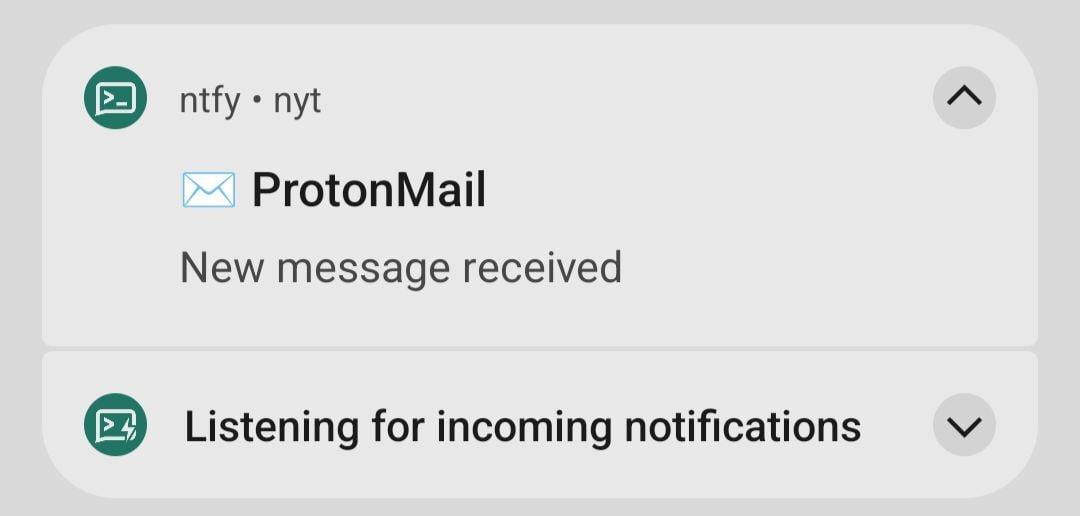Protonmail relies solely on Firebase for receiving notifications on Android. While UniversalPush support is probably in the works, it may take some time until users on ROMs without GSF get built-in notifications.
For those that already use ntfy.sh as a push provider for other apps, https://github.com/0ranki/hydroxide-push is a solution to get push notifications of new mail in Inbox.
The service requires a Linux box to run on, and can be deployed as a container or by running the provided binary. Building from source is of course also an option.
The service is a stripped down version of Hydroxide, the FOSS Protonmail Bridge alternative. There are no ports exposed, all communication is outwards. Communications to Proton servers use the Proton API. The service only receives events from Proton servers, and if the event is incoming mail, a notification is sent to a ntfy.sh server and topic of your choice. Other types of events are simply disregarded, and no other processing is done. The sent push event does not contain any detailed information.
EDIT: Starting from version v0.28.8-push7 the daemon supports HTTP basic auth for the push endpoint.
Disclaimer: I'm the author. All of the work is thanks to https://github.com/emersion/hydroxide, I've merely mutilized the great upstream project of most features for a single purpose. Issues, comments and pull requests are welcome!
EDITED: Didn't notice until looking at the image in this post the notification says "ProtoMail" instead of "Protonmail". Changed the image and it's fixed in the latest version, available when the GitHub action finishes

I didn't read all the comments, so someone may have pointed this out already.
One of the main ideas is probably something like Fedora CoreOS, where the Quadlet systemd files are automatically created during first boot with something like Kickstart or cloud-init.
Instead of shipping the applications with the image, the OS image can be very minimal, while still being able to run very complex stuff.
When you add the fact that CoreOS and other atomic distros can update themselves in the background, and boot to an updated base image, the box just needs periodic reboots and everything stays updated and running with basically no interaction from the admin at all, best case.
Probably not so useful in the self-hosting / homelab context, but I can imagine the appeal on a larger scale.
I've been using Quadlet+Podman kube YAMLs for a while for my own self-hosted services, and it's pretty rock solid. Currently experimenting with k3s, but I think I'll soon switch back. Kubernetes is nice, but it's a lot more fragile for just a single node. And there's way too much I don't understand...
I wrote a couple blog posts about the homelab setup, planning to add more when I have time. Give a read if you're interested: https://oranki.net/tags/self-hosting-my-way/